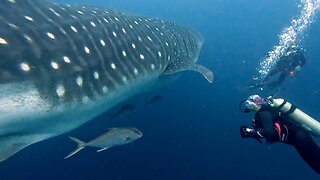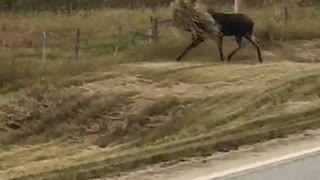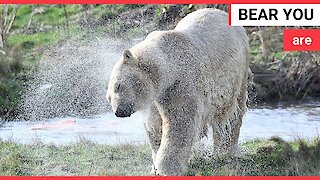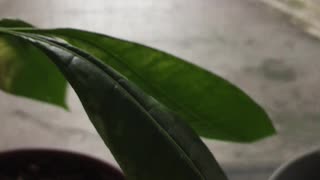Astonishing animal-eating plant discovered in Canadian Provincial Park
Plants are considered a food source for animals. But in a very recent, and astonishing discovery, one of Canada’s most popular Provincial Parks has been found to contain predatory plants that eat animals. The northern pitcher plant is a carnivorous species that has long been known to eat insects. But a recent find by Algonquin Provincial Park researchers shows that the plants are actually devouring juvenile salamanders. Their surprising diet that may even be the reason why this population of pitcher plants in a park in Canada has been growing surprisingly large.
A group of scientists from the Algonquin Wildlife Research Centre has been studying these plants and their feeding habits for over a year. Patrick Moldowan, a PhD student from the University of Toronto had been documenting spotted salamanders in Algonquin Park. Alex Smith, an integrative biologist from the University of Guelph had been researching his findings that the spotted salamanders were a substantial part of the pitcher plant's diet. The plants were growing substantially larger than normal in a part of Algonquin Park and it had raised questions about the reasons. It was then found that these meat-eating plants were capturing a lot of salamanders. One in five plants had salamanders trapped in one or more of their pitchers at the time of the study. This study has gained national attention in what seems to be the first recorded discovery of a plant eating a vertebrate animal.
In an effort to capture nitrogen and other nutrients where the soil does not provide enough, northern pitcher plants evolved into carnivores. The plants have developed digestive enzymes that are held inside their specialized leaves that resemble a small water pitcher. The salamanders and insects are attracted to the plant basins for water and possible refuge from predators. But the plants themselves are effective predators, and the animals remain trapped until they die and are ingested.
Another factor in the demise of the salamander might be their short front limbs and long heads. Their shape prevents the trapped salamander from obtaining sufficient grip to climb out of the wet basin. Once trapped, they are unable to escape. This study has excited biologists and naturalists all over North America in an unexpected reversal of the relationship between plants and animals.
-
 0:47
0:47
WildCreatures
5 days ago $0.74 earnedScuba diver has mind-blowingly close encounter with giant whale shark
2.09K7 -
 0:10
0:10
ViralHog
5 years ago $0.15 earnedCanadian Moose Wears Camouflage
9291 -
 0:51
0:51
SWNS
4 years agoRussian polar bear has been unveiled at a Yorkshire wildlife park
335 -
 2:14
2:14
WTMJMilwaukee
4 years agoHidden bunker discovered with weapons inside near Estabrook Park
80 -
 0:09
0:09
pnelope
4 years agoCanadian ninja warrior
54 -
 1:17
1:17
KNXV
4 years agoPossible "mini-moon" discovered
82 -
 0:09
0:09
deagenstout
4 years agoPlant macro
261 -
 2:24
2:24
WXYZ
5 years agoCanadian union Unifor meeting with GM in effort to keep plant open
1 -
 7:29
7:29
ViralHog
5 years ago $0.02 earnedSquirrel and Mink Duke it Out in Park
121 -
 0:28
0:28
KTNV
4 years agoTRENDING: New ocean creature discovered
50